Abstract
A micromethod multitest system prepared by Analytab Products, Inc. and conventional tests employed at the Center for Disease Control for identification of anaerobes were compared. All procedures were conducted in an anaerobic glove box. A total of 104 cultures, including 18 reference strains and 86 diagnostic cultures, were examined. Ninety-one percent of the total tests performed with the two systems were in agreement. Greater than 90% agreement between the two systems was obtained with 12 of the 17 differential tests compared. The tests for nitrate reduction and H2S production gave the poorest agreement, 77.8 and 80.8%, respectively. Only 66% of the 86 diagnostic cultures could be presumptively identified with the micromethod system supplemented only with microscopy and colonial characteristics. However, when appropriate supplementary tests and gas-liquid chromatography were used with the micromethod system, 85% of the 86 strains could be identified. When Ehrlich reagent, instead of Kovac reagent, was used with the micromethod to test for indole, the agreement in identification was raised to 93%.
Full text
PDF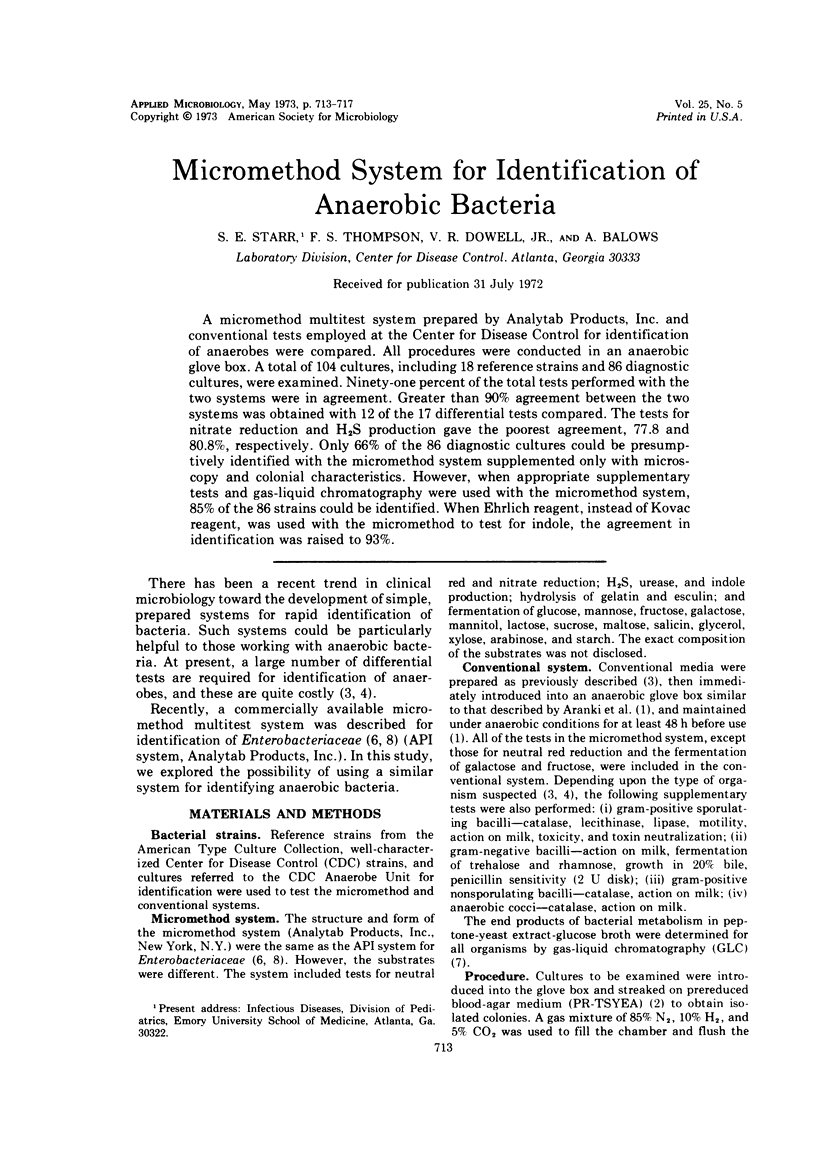
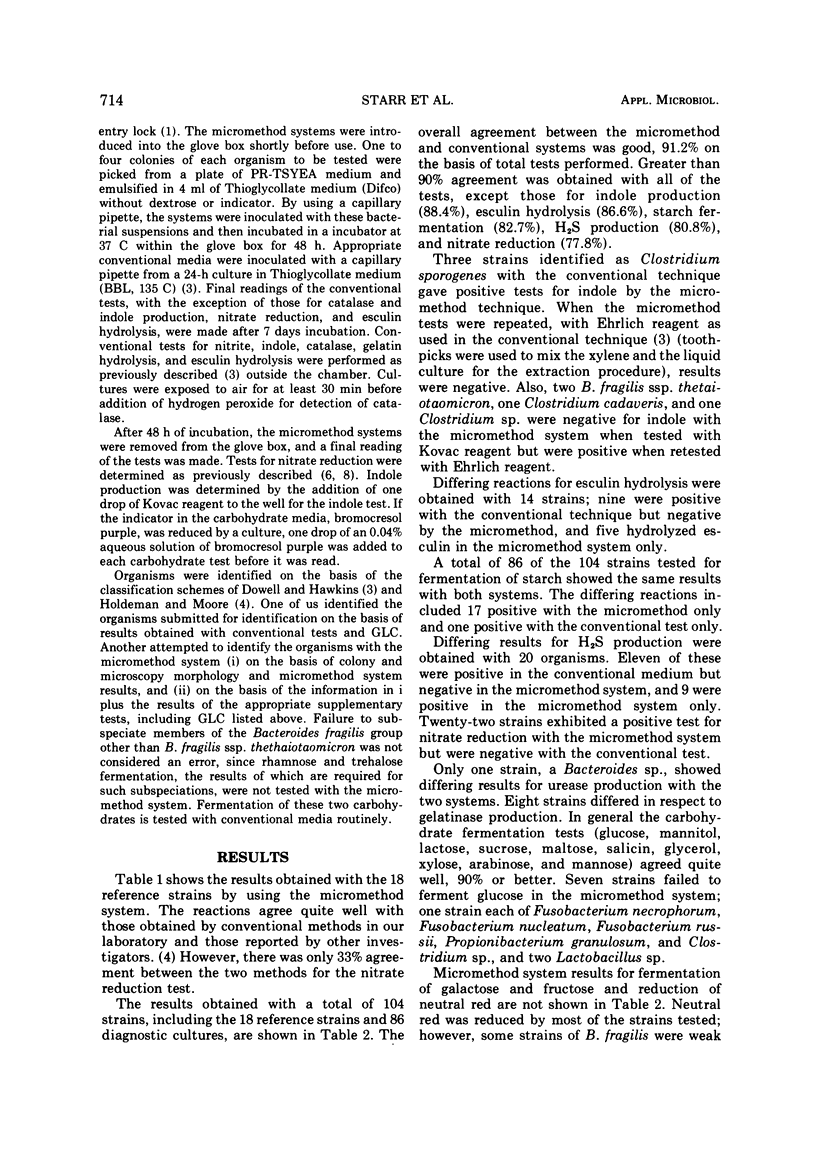
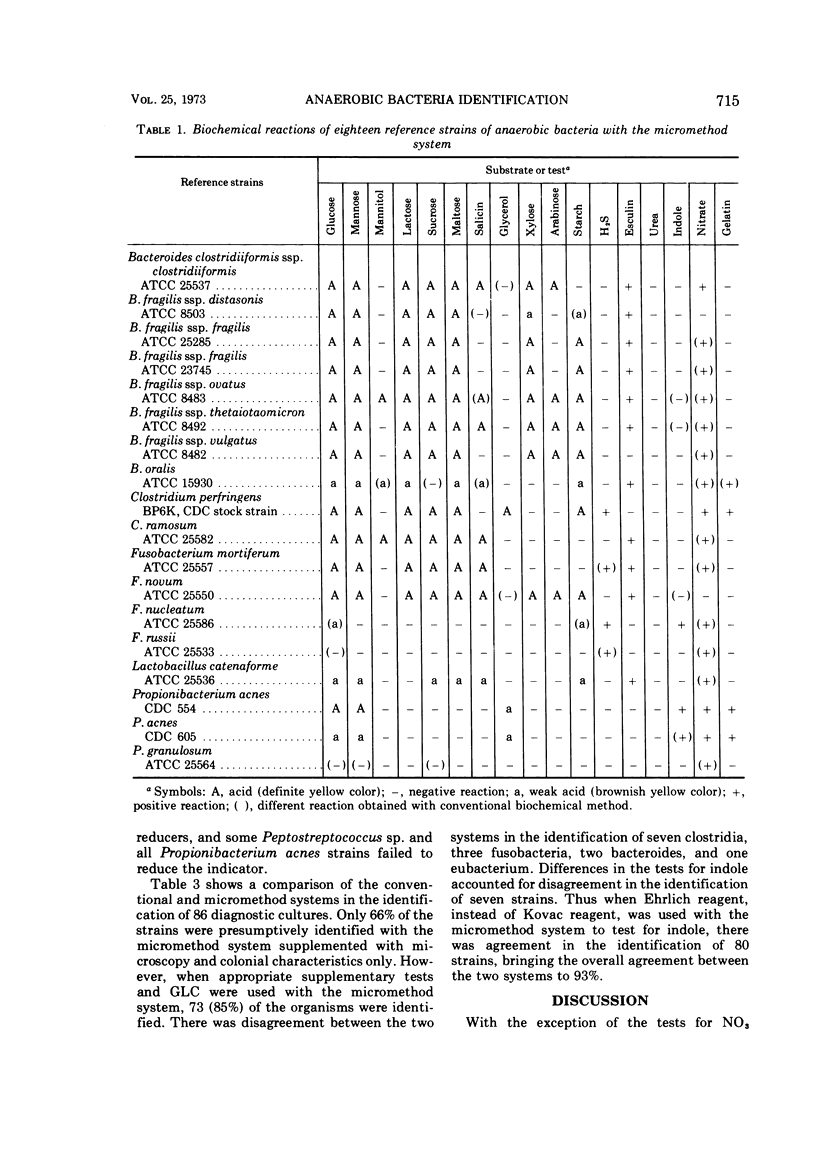
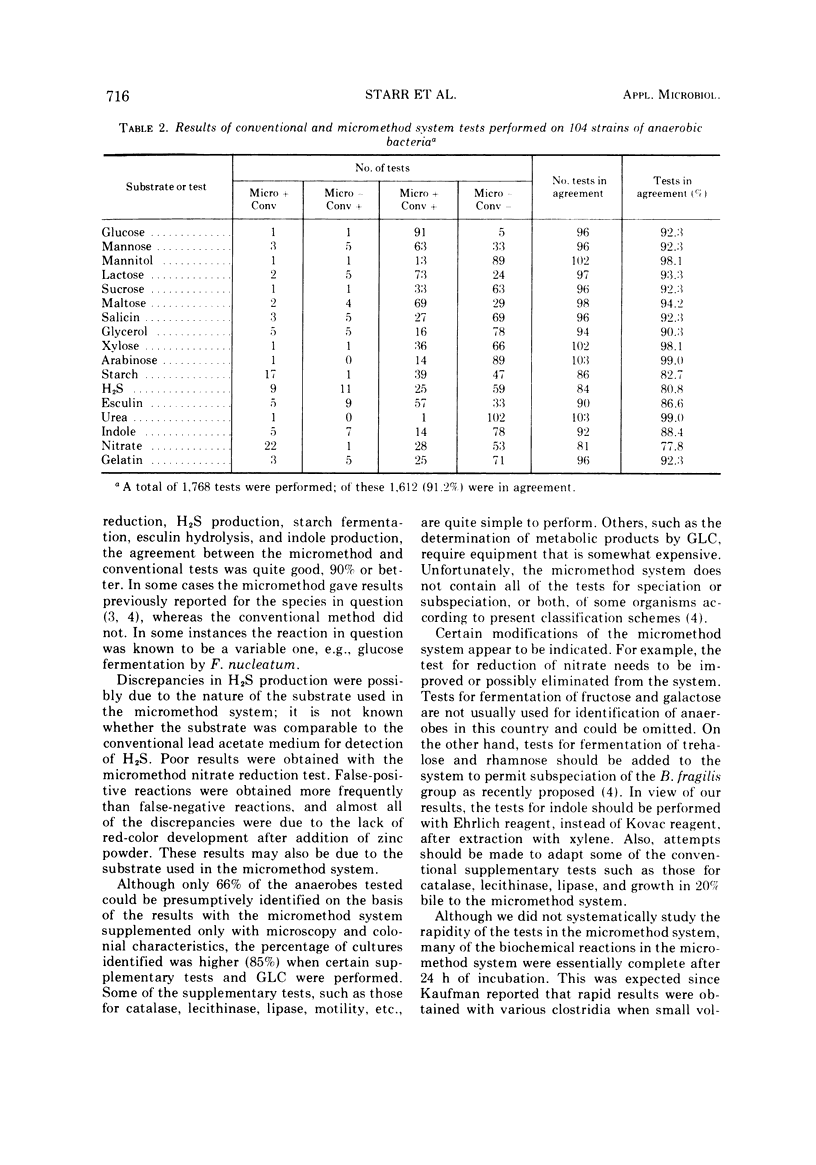
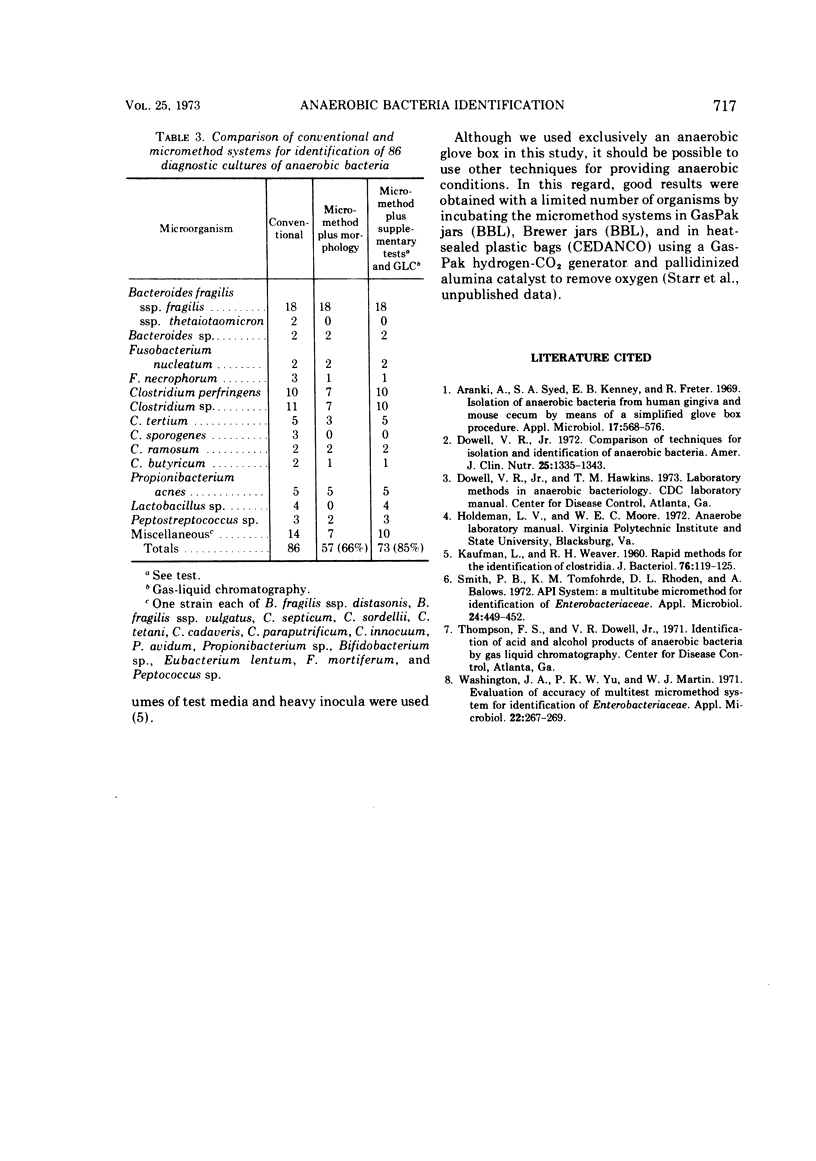
Selected References
These references are in PubMed. This may not be the complete list of references from this article.
- Arank A., Syed S. A., Kenney E. B., Freter R. Isolation of anaerobic bacteria from human gingiva and mouse cecum by means of a simplified glove box procedure. Appl Microbiol. 1969 Apr;17(4):568–576. doi: 10.1128/am.17.4.568-576.1969. [DOI] [PMC free article] [PubMed] [Google Scholar]
- Dowell V. R., Jr Comparison of techniques for isolation and identification of anaerobic bacteria. Am J Clin Nutr. 1972 Dec;25(12):1335–1343. doi: 10.1093/ajcn/25.12.1335. [DOI] [PubMed] [Google Scholar]
- KAUFMAN L., WEAVER R. H. Rapid methods for the identification of clostridia. J Bacteriol. 1960 Jan;79:119–121. doi: 10.1128/jb.79.1.119-121.1960. [DOI] [PMC free article] [PubMed] [Google Scholar]
- Smith P. B., Tomfohrde K. M., Rhoden D. L., Balows A. API system: a multitube micromethod for identification of Enterobacteriaceae. Appl Microbiol. 1972 Sep;24(3):449–452. doi: 10.1128/am.24.3.449-452.1972. [DOI] [PMC free article] [PubMed] [Google Scholar]
- Washington J. A., 2nd, Yu P. K., Martin W. J. Evaluation of accuracy of multitest micromethod system for identification of Enterobacteriaceae. Appl Microbiol. 1971 Sep;22(3):267–269. doi: 10.1128/am.22.3.267-269.1971. [DOI] [PMC free article] [PubMed] [Google Scholar]


